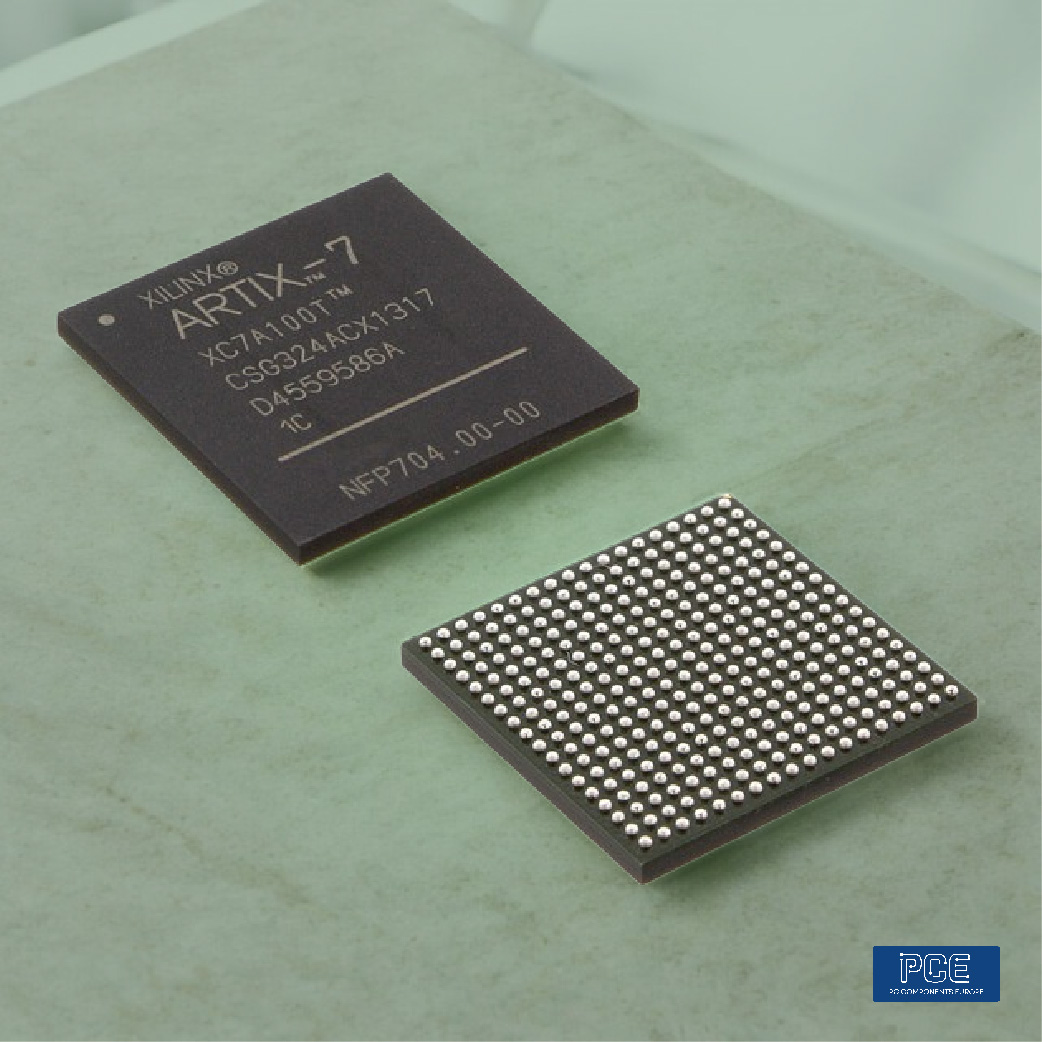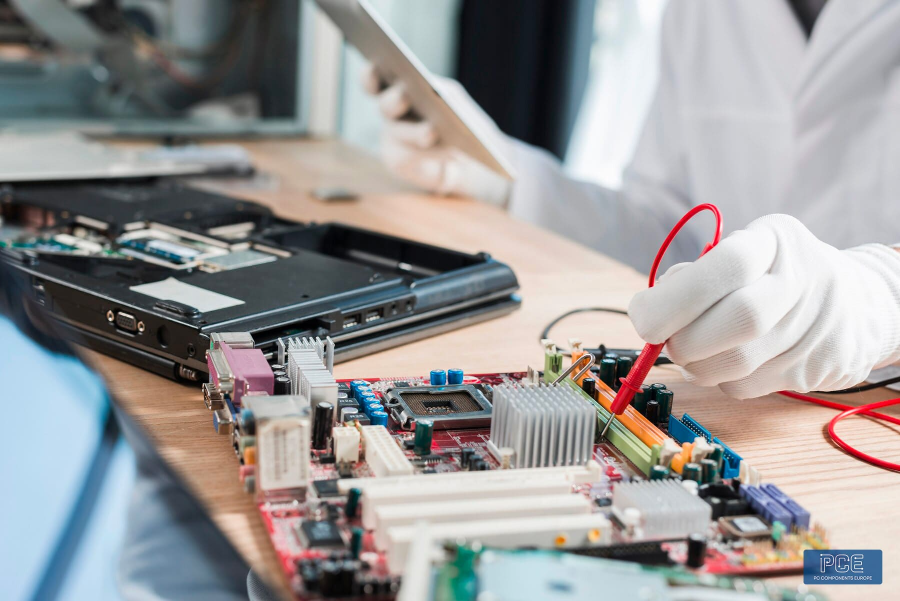As artificial intelligence (AI) continues to transform industries, the demand for AI FPGAs is growing rapidly. These versatile hardware solutions are becoming essential for developers and companies looking to optimize their AI applications.
This article’ll explore why FPGA in AI is gaining traction, how it compares to other hardware options, and which FPGA products are best suited for your AI needs.
What is FPGA, and Why is it Important for AI?
An FPGA (Field-Programmable Gate Array) is a programmable hardware device that offers high flexibility and parallelism, making it ideal for computationally intensive tasks such as AI workloads. Unlike fixed-function devices like GPUs or TPUs, FPGAs can be reconfigured to meet the specific requirements of AI applications, allowing for more customized performance optimization.
AI models, especially deep learning models, are increasingly complex, and FPGAs' ability to handle high-speed data processing, parallel computing, and low-latency operations makes them a preferred choice for many developers. Their reprogrammable nature also allows for future-proofing AI systems , as they can adapt to new algorithms or architectures without requiring new hardware.
Why AI Applications are Increasing FPGAs Demand?
The rise in demand for FPGAs in AI is driven by several factors:
-
- Customizability: FPGAs can be tailored to the specific requirements of AI models, optimizing performance where needed.
-
- Low latency: AI applications such as real-time video processing, autonomous vehicles, and robotics demand quick decision-making, and FPGAs excel at providing low-latency performance.
-
- Energy Efficiency: AI workloads often require high computational power, and FPGAs offer a more energy-efficient solution than traditional GPUs or TPUs.
-
- Edge computing: With the growth of edge AI, where data processing happens closer to the source, FPGAs provide the necessary flexibility and processing power for real-time inference on edge devices.
These factors are leading more businesses and developers to adopt FPGAs for AI, further driving up their demand.
FPGAs vs. MCUs for AI: Which One to Choose?
While FPGAs are gaining significant interest for AI applications, MCUs (Microcontroller Units) still play a crucial role in AI development, especially for low-power embedded systems. MCUs are often used for basic AI tasks such as processing sensor data in IoT devices .
However, FPGAs offer superior parallel processing capabilities and flexibility, making them a better choice for more intensive AI workloads.
The choice between FPGA and MCU depends on the specific requirements of your AI application. For real-time, high-performance AI tasks, FPGAs are the best choice.
For simple, low-power AI functions, MCUs may be sufficient.
Exploring FPGAs: From AI Applications to Versatile Industry Solutions
FPGAs (Field-Programmable Gate Arrays) are increasingly used in a wide range of industries due to their flexibility and high performance.
While FPGAs play a significant role in AI applications such as machine learning inference and edge computing, their versatility extends far beyond AI.
AI and Machine Learning
FPGAs are highly regarded for their ability to handle demanding AI workloads with low latency.
They are ideal for tasks such as real-time data processing, deep learning inference, and edge computing, making them a key component in industries such as autonomous vehicles, smart devices, and AI-based healthcare systems.
Telecommunications
FPGAs are crucial in telecommunications, particularly for 5G infrastructure, where they are used for real-time data processing and network adaptation, helping to manage high bandwidth requirements.
Aerospace and Defense
Due to their ability to provide customized, high-speed processing, FPGAs are used in aerospace and defense for radar systems, signal processing, and secure communications.
Medical Devices
Medical imaging, diagnostics and real-time patient monitoring rely on FPGAs for their speed and ability to handle large amounts of data, ensuring accurate and timely results.
Automotive
In the automotive industry, FPGAs power advanced driver assistance systems (ADAS) by processing sensory data in real time to improve vehicle safety and automation.
Industrial Automation
From robotics to industrial automation, FPGAs support tasks such as motion control and computer vision, providing the real-time performance needed in highly automated environments.

The best-selling and most in-demand FPGA families at PCE
We outline some of the top FPGA options from leading brands, which are suited for AI and broader applications in telecommunications, aerospace, and more.
AMD FPGA (Xilinx)
AMD's Xilinx FPGAs are well known for their role in AI applications, but they are also versatile and suitable for various industries, from embedded systems to data centers. The most popular Xilinx FPGA families include Spartan, Artix, Kintex, and Virtex.
-
- Spartan: level FPGAs perfect for low-cost, low-power applications: XA7A35T -1CSG324I, XA6SLX9-3FTG256Q ,
-
- Artix: Ideal for mid-range, power-efficient applications such as computer vision and communications: XCAU25P-2FFVB676E, XC7A15T-1FTG256C
-
- Kintex: Combines low power and high performance for applications requiring DSP, data center and networking: XCKU035-1FBVA676I, XCKU3P-1FFVB676E
-
- Virtex: High-end FPGAs designed for the most demanding tasks, including 5G infrastructure and aerospace: XCVC1802-1MSEVIVA1596, XCVE2302-2MSESFVA784,
Intel FPGA
Intel FPGAs, formerly known as Altera, are designed to provide high-speed processing in industries ranging from AI to telecommunications and more. Intel's most sought-after PCE FPGA families include Stratix, Arria®, and Cyclone® , known for their flexibility and performance across multiple industries.
-
- Intel Stratix: Offers high bandwidth and processing power for advanced signal processing in defense and telecommunications: 1SG040HH3F35I2LG, EP1S80F1508C6N
-
- Intel Arria 10 GX : Ideal for parallel processing, this FPGA is highly regarded for AI inference, industrial automation, and signal processing: 1SG040HH3F35I2LG, EP1S80F1508C6N
-
- Cyclone® : Offers low-cost, low-power FPGAs for embedded systems, industrial control, and automotive applications: EP1C12F324I7N, EP3C25Q240C8N, 5CEBA4F17C8N, 5CGTFD9E5F31I7N
FPGA Lattice Semiconductor
Lattice Semiconductor specializes in low-power FPGAs that are excellent for AI at the edge and broader applications such as smart homes and industrial automation. Their focus on reducing development time and energy consumption allows them to serve a wide range of industries, from telecommunications to automotive.
-
- MachXO: Series of low-power FPGAs designed for cost-sensitive applications such as interface bridging and control: LCMXO1200C-3TN100C, LCMXO1200C-3TN144I
-
- MachXO2: Improved version with increased flexibility and performance for I/O expansion and control tasks: LCMX02-256HC-4TG100I, LCMXO2-1200HC-4TG100I, LCMXO2-2000HC-4BG256I, LCMXO2-256HC-4SG48C
-
- ECP5: Combines high performance with low consumption, perfect for industrial automation and video processing: LFE2M20E-5FN256CAAF, LFE2M20E-5FN256C, LFE2M20SE-7FN256C, LFE3-35EA-8FN484C
-
- XP: Ultra-low-power FPGAs ideal for battery-powered devices requiring power efficiency: LFXP2-17E-5FTN256I, LFXP2-30E-5FT256C, LFXP2-8E-5TN144C
FPGA Microchip Technologies
Microchip Technology's FPGAs are prized for their reliability and low power consumption. These FPGAs find applications in both AI and non-AI sectors, such as automotive, telecommunications and industrial automation.
-
- PolarFire: Known for advanced security features, these FPGAs are ideal for real-time processing in embedded systems: MPFS250TS-1FCSG536, MPFS460T-FCG1152IPP
-
- SmartFusion: Combines an FPGA with a microcontroller, providing flexibility for automotive, industrial and medical applications: M2S090-FCSG325I, M2S010-1VF256, M2S050-FCSG325I, M2S005-VFG256I
-
- ProASIC: Flash-based FPGA with in-system programmability, offering low power and high reliability, ideal for telecommunications and consumer electronics: AGLN250V2-VQG100I, AGLN125V2-VQG100I
-
- IGLOO: Ultra-low-power FPGAs designed for battery-powered devices such as portable electronics and industrial equipment: M2GL010-TQG144, M2GL010T-VFG256I, M2GL025T-1FGG484I, M2GL060T-1FGG484I, M2GL090T-1FGG484I
Find the components you are looking for at PCE
At PC Components Europe, we proudly offer a wide range of FPGAs from top brands, such as AMD Xilinx, Intel, Lattice Semiconductors and Microchip Technologies . Our products meet the highest quality standards , verified by our PCE Quality Laboratory .
For further information or enquiries, feel free to reach out to our multilingual team, available in Italian, French, Swedish, Polish, English, Spanish and Finnish . We're here to assist you in finding the FPGA for your AI project!


